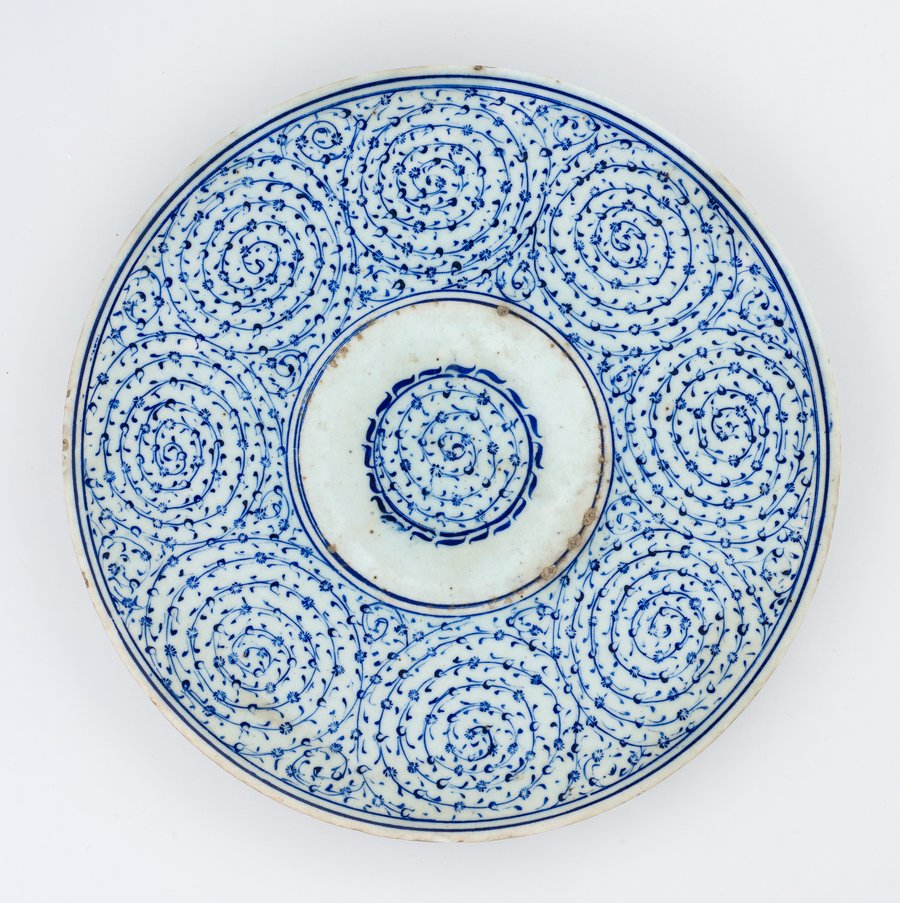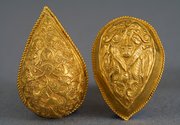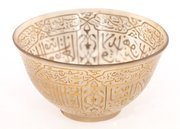
Dish (tondino)
Museum of Islamic Art
- Title:
- Dish (tondino)
- Production place:
- Iznik
- Date:
- 1535 - 1545
- Period:
- Ottoman
- Title:
- Dish (tondino)
- Production place:
- Iznik
- Date:
- 1535 - 1545
- Period:
- Ottoman
- Material:
- Fritware, Pigment, Glaze
- Technique:
- Underglaze painting, Glazing
- Dimensions:
- 3.1
- Diameter:
- 25.6
This large, almost flat plate from Iznik, Turkey features a vine scroll with little leaves curled into a spiral in the tondo, a motif that is repeated eight times around the extremely broad rim. Drawn in thin blue lines on a stark white ground, the scrolls on the rim expand across the entirety of the plate leaving little vacant space. Although originally attributed to the Golden Horn in Istanbul, there is no archaeological evidence that ceramics of this style were made there. Spiral scrolls commonly appeared in Islamic art of the late medieval period, but this specific design recalls those seen in the background of the tughra (the Ottoman Imperial monogram) of manuscripts produced during Sultan Süleyman’s rule – also known as Süleyman the Magnificent (900-974 AH/1495-1566 CE) - lending it the name “Tuğrakeş Spiral Style”, after the title of the specialist in the chancery entrusted to draw the sultan’s tughra. Not limited to plates, the Tuğrakeş Spiral Style is seen also on bowls, bottles and ewers. This blue-and-white style is often a marker of early Iznik ceramics, which evolved from Mamluk production, and is dated to around the mid-10th century AH/mid-16th century CE. Like other pottery of the same colour palette, blue-and-white Iznik was inspired by luxury Chinese imports which were highly fashionable throughout the Ottoman Empire.



